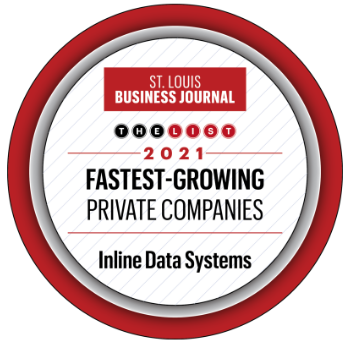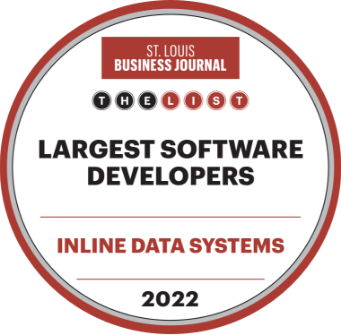Every business decision you make will influence at minimum three things:
- Your profits
- Your efficiency
- Your clients’ satisfaction
Let’s take coffee for example.
Did you know that 65% of employees expect their office to have not just coffee, but high-quality coffee? And providing those little perks can get your team energized about their work — literally.
So, what does caffeine have to do with making decisions? Well, if employees have a preference about their morning brew, they probably feel even stronger about the CRM they use to hit their bonus.
And since deciding which CRM you use is so important, you need to consider your options very carefully. That’s why we wrote this helpful guide how to choose a CRM.
Make a List: The First Thing to Do When Thinking of How to Choose a CRM
Seems obvious, right?
But you’d be surprised how often companies will assume every CRM does the same thing — and we promise that’s not the case. So, here’s what we recommend:
If you have a CRM already, write down the things you do and don’t like about its functionality. Since you know what you’re looking for, verifying if any new system does what you want should be relatively easy.
If you’re looking for your first CRM, bucket your functionality into “Must Have” and “Nice to Have.”
No matter what, take the time to map out every step of your customers’ journey. Write down how and when you interact with customers or prospects during each of those phases: Before, during and after the sale. Each phase has its own needs — and your CRM should provide all-in-one functionality to address them.
Second: See Their Results
Once you’ve made your list and mapped out your steps, you can begin your search in earnest. And odds are you’re going to want a CRM with a proven track record of producing results. So, as you browse, be on the lookout for success stories, online reviews and testimonials.
Or, more importantly: Case studies.
These “before and after” scenarios can really show how one platform can outshine another. And in case you were wondering, it just so happens we have a few of our own to share with you.
Third: Ask If You Can Customize the CRM
Your company does things differently: Different products, prices, sales techniques.
You need to be able to bend — but not break — the CRM mold to align your experience 100% to your business model. And since you probably can’t invest months and potentially millions of dollars to make a homegrown CRM, you’ll want customization to be one of those “Must Have” items mentioned earlier.
Yet, even in 2024, some software is too rigid to allow this basic functionality. Not ours. Inline CRM gives you practically infinite customization options, from:
- Running reports on sales, cancels, marketing and more
- Sales scripts for you to create and refine “if/then” sequencing
- Email triggers to close new deals and keep current customers
- Queues and data query tabs integrating and prioritizing new leads
Integrating third party solutions is another of our big customization features. And while you’ll probably find what you need (and then some) with our default functionality, we are always open to incorporating additional requests on a case-by-case basis.
But, you never know unless you ask — which is exactly why you should ask what you can and can’t integrate with any CRM you choose.
Fourth: Confirm They Make Migrating Data Easy
Suppose you chose a CRM. And during training, you find out that your client and prospect list — you know, the lifeblood of your company — needs to be migrated… manually.
Remember: Not all CRMs are the same, including how your data is formatted when migrating.
Sure, you can copy and paste. Yes, data entry isn’t that big of a deal. But you can avoid lots of headaches by clarifying what the data transfer process looks like early on.
As it turns out, our process is painless.
Since data is literally our middle name, we’ve taken the steps to make sure whatever you import is formatted properly when you upload an Excel file or .csv. And if it’s not, we take it on ourselves to get it right, so you can start using our CRM right away.
Fifth: Ask if They’re Serious About Data Security and Uptime
2,200.
That’s about how many cyber-attacks will happen by the end of today! And while you might think your extended warranty company is too small to target, hackers see it as a playground to practice on.
What does that mean?
Your CRM provider needs to be up to snuff when it comes to protecting the Personal Identifying information (PII) of your clients and prospects: Credit card number, email address and more. And you can probably guess what we’ll say next…
Yep. We recently became SOC 2 Certified, which means we passed a rigorous audit that proves our system and data management protocols meet the latest standards of data protection and privacy.
And while it doesn’t do your customers much (well, any) good if their data is vulnerable, it doesn’t do you any good if you can’t access it. That’s why our system has a Service Level Agreement that guarantees 95% uptime— and we’re making constant strides to make it 100%. We even have disaster recovery measures in place to minimize the effects of any prolonged outage.
Not every CRM can say that.
Sixth: Will You Have Sticker Shock?
If all other things are equal, it makes cost for price to be the deciding factor. But CRM pricing isn’t exactly… standardized.
Some companies charge by the number of users. Some charge by the number of contacts or leads.
But what if you didn’t pay until your client paid you?
That’s how we approach pricing — and we stand alone when it comes to this.
Since we only charge $25 per funded contract and have minimal fees, you might be surprised (in a good way) by how much you keep from every sale.
Seventh: Can You Try Before You Choose?
You can with Inline CRM, with no obligations, credit card or pressure.
Why not contact us for access? It’s an easy choice to make.





